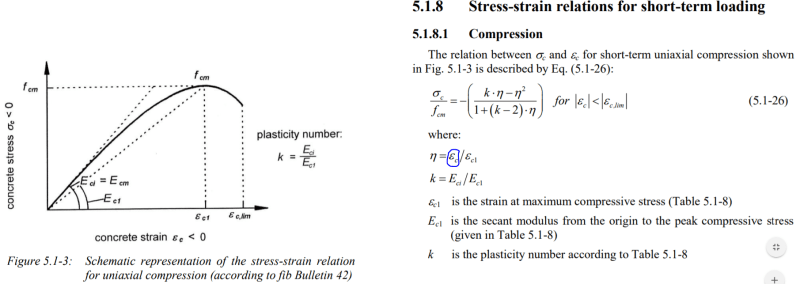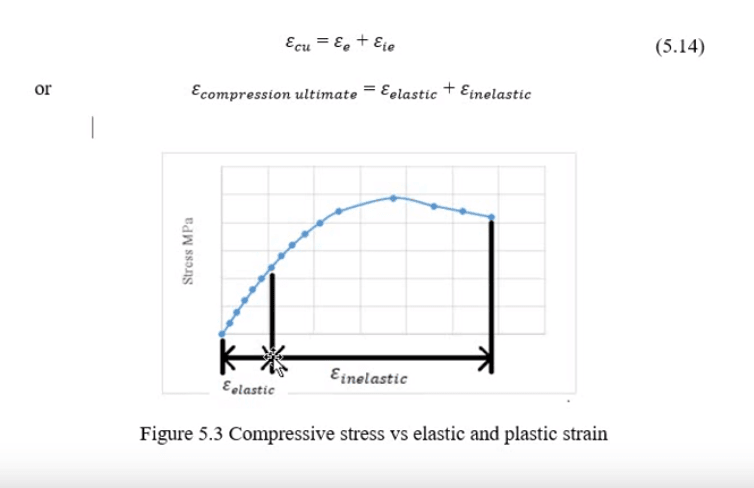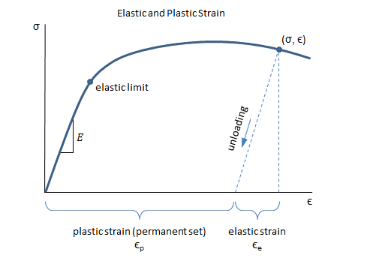drennon236
Civil/Environmental
I have a set of inelastic strains, for which I need to find the corresponding compressive stress. This is the formula I want to use (5.1-26), the encircled strain is defined as "concrete compression strain" in the paper.
 .
.
This is definition of strain:
 .
.
So I am wondering if the "concrete compression strain" in the first picture is the same as inelastic strain? - if not what do I have to use as "concrete compression strain"?

This is definition of strain:

So I am wondering if the "concrete compression strain" in the first picture is the same as inelastic strain? - if not what do I have to use as "concrete compression strain"?







